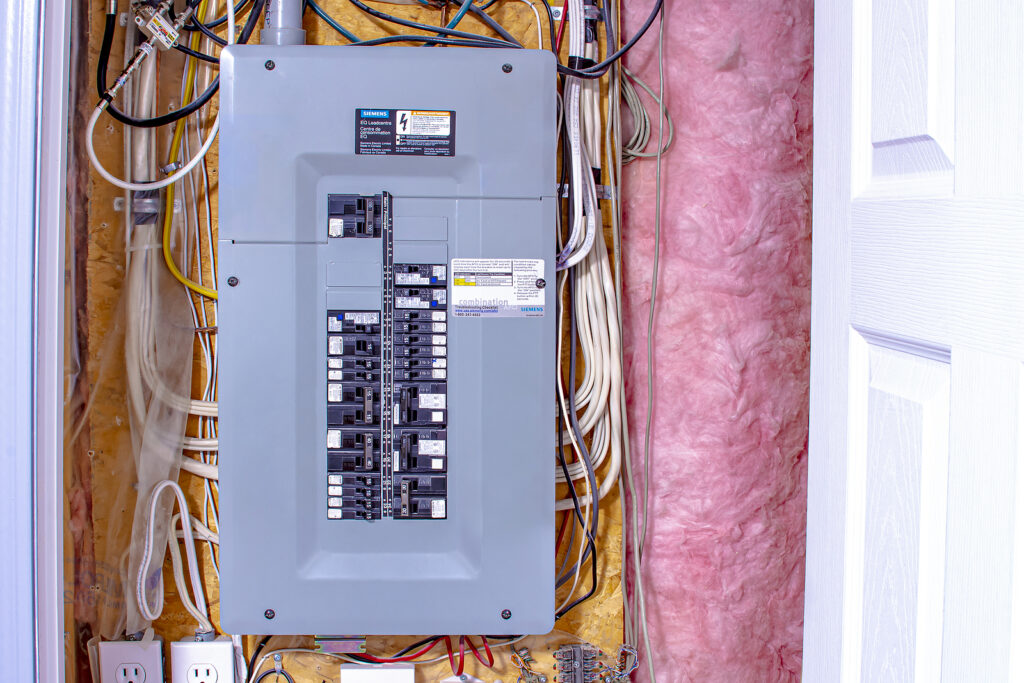How to Tell if Your Albuquerque Home Electrical Panel is Overloading

Your home’s electrical panel is kind of like the heart that pumps electricity through the veins and arteries of your house. It takes power from the utility company and delivers it to all the electrical circuits that run to your outlets, switches, and appliances. Inside the panel are breakers designed to trip and cutoff power if a circuit gets overloaded.
But what if your electrical panel itself is outdated or too small? You could be overloading it without even realizing the danger!
Let me walk you through some ways to tell if your Albuquerque home’s electrical panel is overloaded or at risk of overloading.
How Many Large Appliances Are You Running at the Same Time?
Start by thinking about all the major power suckers in your home – we’re talking about air conditioners, space heaters, microwaves, washing machines, laptop chargers, big screen TVs. You get the idea. These types of appliances draw a ton of electricity compared to smaller items like lamps and phone chargers.
Now think about how many of those electricity guzzlers you try to run at the same time, especially in different areas of your house. Trying to go full blast on a bunch of large appliances simultaneously can definitely overload an undersized electrical panel.
Pay attention to what happens when you’ve got multiple big appliances running concurrently – maybe the A/C unit plus the electric dryer or oven. Do your lights flicker or dim for a moment? Or does the power go out completely? These are warning signs that your panel may already be tapped out.
Do You Hear Buzzing or Humming Near the Panel?
Electricity makes noise, so listen closely around your home’s electrical panel. A distinct buzzing or humming sound when you’ve got multiple appliances running can mean the circuits are being pushed close to their limits. Any unusual noises coming directly from the breakers themselves is especially worrisome – it likely indicates dangerous overheating and arcing due to excess electrical flow.
Check for Hot Spots on the Panel and Wires
Use an infrared thermometer or thermal imaging camera to scan your electrical panel, outlets, and switches when appliances are on. If you spot any areas showing significantly higher temperatures compared to surrounding spots, that denotes trouble inside. Hot spots can lead to electrical meltdowns and fires if not addressed ASAP. Call an electrician right away if you discover any.
Do Certain Breakers Trip or Flip Frequently?
The breakers in your panel are designed to trip as a safety mechanism if they detect a big surge of electricity. But breakers that flip often under normal use indicate your home’s power supply is being maxed out. If you’re frequently having to flip certain breakers back on, that circuit is likely overloaded.
Make a note of which appliances are running when a particular breaker trips. If it tends to happen when major appliances like the fridge or electric stove are on, along with several smaller items, your panel probably needs upgrading to a higher amp capacity.
Have You Noticed Any Burning Smells?
Never ever ignore the smell of burning plastic or wood coming from your electrical panel or outlets. Chances are some wires inside your walls are smoldering due to excessive electrical current. Stop using appliances on those circuits and call an electrician ASAP to check for hazardous damage before it ignites into open flame.
How Old is Your Electrical Panel?
Has your home’s electrical panel been updated since the house was originally built? If not, it’s likely woefully outdated and insufficient for powering all the modern appliances and gadgets homes have these days. Electrical code requirements and energy demands have increased over time. Even perfectly functioning old panels probably max out way sooner than current equipment.
Contact the builder or previous homeowners to find out the age of your electrical panel if you’re unsure. Anything over 20 years old should be replaced with a new 200 amp panel or greater to be safe. And don’t take risks with ancient fuse boxes – these need upgraded to modern breaker panels.
Are the Main Service Wires Sized for 200 Amps?
The main service wires that deliver power from the street into your home should be sized for 200 amps or more for most modern houses. Look where the main service wires connect to the external electrical meter. They’ll be the biggest wires present, likely running into a main circuit breaker/switch next to the meter.
If the service wires are aluminum, they need to be at least 2/0 gauge to support 200 amps. 1/0 aluminum can handle up to 175 amps. For copper wiring, 4 gauge supports 200 amp service and 3 gauge supports up to 175 amps max. Any smaller sized main wires will restrict electricity flow into your panel.
Does the Voltage Drop Under Load?
Use a multimeter to check the voltage at your home’s outlets with appliances running on various circuits. Voltages below 110 to 112 volts with loads indicates issues. Low voltage under load shows high resistance on the wires from overloading. This strains your home’s electrical system over time, creating fire risk.
Listen to Your Electrical Contractor’s Recommendations
If you’re having any remodeling or updates done on your home, pay attention to what the electrical contractor says about your panel. They can best assess if the existing capacity needs upgraded to meet current code and safely power any added lighting, appliances, etc.
Take Action Now!
Contact a licensed electrician to evaluate your panel and provide professional recommendations if you have any concerns.
They can ensure your panel’s capacity meets your home’s needs. A new 200 amp or larger panel may be required to safely handle modern energy demands, especially if you’re planning major remodels. Schedule an upgrade before taking on big projects.
